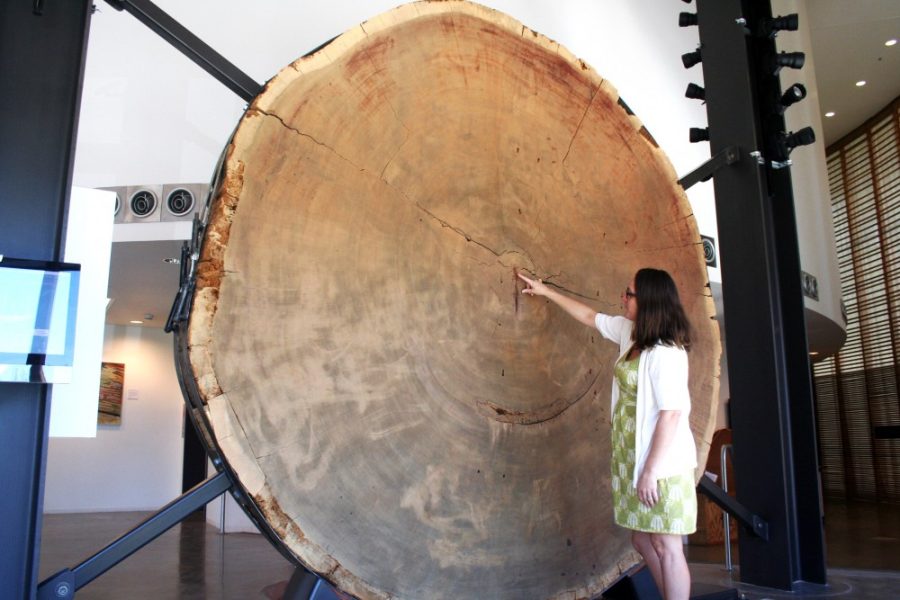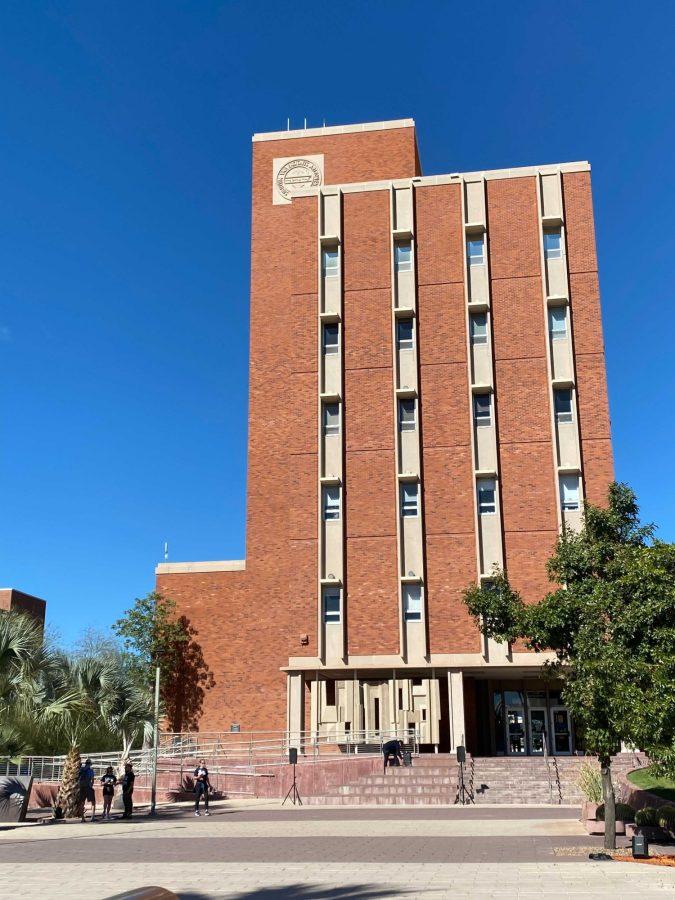It all started with a tree stump.
When A.E. Douglass noticed the rings on the stump of the tree he was sitting on, he took his observation to the next level, eventually creating a new field of science — dendrochronology.
Dendrochronology research uses tree rings to determine the age of a piece of wood. Over time the field has broadened to include other sciences with the prefix dendro-, like dendroecology and dendrochemistry.
The UA is home to the first-ever dendrochronology lab, the Laboratory of Tree-Ring Research. It was founded in 1937, when Douglass was given temporary access to a space below Arizona Stadium; that lab has since grown into one of the largest in the world.
“It was the most dingy, dirty place you’ve ever done brilliant science,” said Mary Glueck, a docent for the LTRR and former researcher.
Last year, the LTRR finally emerged from underground and found a new home, designed to look like a tree house, next to the Mathematics East building.
The new space’s open floor plan allows researchers to interact with each other more freely.
“Now we’re kind of really in the place where we needed to be for decades,” said Tom Swetnam, Regents’ professor and director of the LTTR. “The interactions are so important.”
Those interactions create an environment of collaboration vital to the diverse applications of tree ring research.
“We’ve been a multidisciplinary organization from the beginning,” Swetnam said. “I think the lab, in some way, is the poster child of different disciplines coming together and interacting.”
This diversity stems from the amount of information that is contained within tree rings.
“Trees record everything that’s going on around them, so anything that affects the tree’s growth is locked up in a tree ring,” said Kit O’Connor, a dendroecology researcher and graduate student. “As long as that tree is in one place, it’s recording everything that’s going on that’s affecting it.”
O’Connor is studying forest fires and how they have changed over the past 400 years. By looking at trees and how they’ve been affected by fires, he can learn about the disturbance regimes in the forest and as how they have changed over time, as well as what’s causing the changes.
O’Connor and his colleagues work with land managers to try to restore the resiliency of the forest ecosystem so that forests won’t be devastated by severe fires like they are now.
“We’re kind of retelling the natural history of what’s happened so that we can inform managers of how best to manage for these things in the future,” O’Connor said.
He has found that one of the major causes of the increase in fires’ severity is the way that humans have managed forests.
“We’ve choked our forests with too many stems,” he said. “The forests that were fire-dependent have become kind of their own human-created beast.”
But the LTRR isn’t just focused on forest fires.
“Everybody kind of has their own interesting thing that they look at, that’s recorded in those rings,” O’Connor said. “Everything from chemical changes to earthquakes, floods, any kind of natural events that are affecting trees.”
Those natural events enable researchers to date the rings, giving precise information about exactly when a tree lived and was cut down.
“It’s a tool,” Swetnam said. “It’s the record itself that’s preserved, so it enables us to basically reconstruct what has happened in places and times, very precisely, to the year, or sometimes to the season.”
The capacity for precise dating makes tree ring research extremely valuable to the fields of archaeology and history. If a researcher is given a piece of wood with rings, they can determine the year that the tree was cut down. That can help to assign precise dates to archaeological sites or wooden historical artifacts.
“Anything with lots of tree rings in it can be analyzed with dendrochronology,” said Paul Sheppard, an associate professor in the LTRR who dates violins using dendrochronology.
Sheppard performed dendrochronological analysis on “The Messiah,” a famous violin, to determine if it was actually a Stradivarius made in 1716.
The ability to enhance knowledge about a broad range of topics is what makes dendrochronology so valuable. It can enable discoveries in topics including the climate, fire and the rise and fall of past civilizations, according to Swetnam.
When a researcher puts a tree stem under a microscope, they’re taking a look into the past and using it to shape knowledge in the present.
“It’s a sense of like you’re touching something that is reaching back into the past, like a time machine or something,” Swetnam said.









